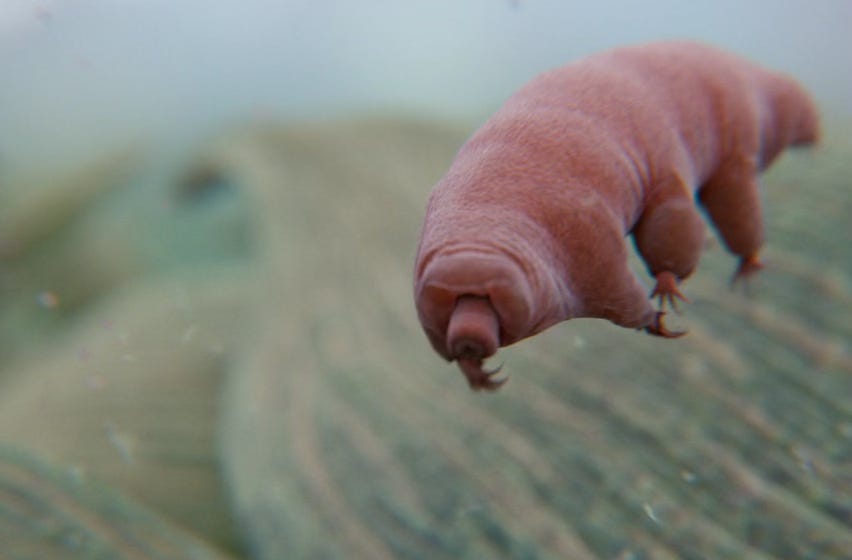When Christian Larsson visits Isaac and Ling’s lab in S1 E7 he encounters a remarkable creature through a microscope: the Tardigrade. Isaac and Ling have been working with these amazing creatures, known for their resilience. Their unique ability to withstand extreme conditions has captivated scientists for many years. But what exactly are tardigrades, and why are they so extraordinary?
Tardigrades, also known as water bears or moss piglets, were first discovered in 1773 by the German zoologist Johann August Ephraim Goeze. Goeze observed these tiny, bear-like creatures in water samples taken from mosses and lichens, which prompted his interest due to their unusual, slow movement and robust appearance. In 1777, the Italian biologist Lazzaro Spallanzani gave them the name ‘Tardigrada,’ derived from the Latin words ‘tardus’ (slow) and ‘gradus’ (step), reflecting their deliberate locomotion.
Tardigrades can be found in a wide range of environments across the globe, from the deep sea to the highest mountains, and from tropical rainforests to the polar regions. They are particularly fond of moist environments like lichens and mosses, which provide them with the water film necessary for their survival.
Biologically, tardigrades are characterised by their eight legs, each with tiny claws. They have a simple body structure, lacking both circulatory and respiratory systems, instead absorbing oxygen directly through their body wall. Their simple yet robust anatomy is complemented by a remarkable physiological adaptation: cryptobiosis.
Cryptobiosis allows tardigrades to survive in extremely harsh conditions by entering a state where their metabolic processes come to a near halt. In this state, they can withstand temperatures ranging from just above absolute zero to over 150 degrees Celsius, intense radiation, the vacuum of space, and even exposure to harmful chemicals.
One of the most remarkable aspects of tardigrades is their ability to withstand high levels of ionising radiation, including gamma rays. Gamma radiation is particularly harmful because it can penetrate living tissues and damage cellular structures, including DNA. In space, gamma radiation is a significant component of the background radiation that can pose serious risks to living organisms.
Studies have shown that tardigrades can survive doses of gamma radiation up to 5,000 grays (Gy), a level that would be lethal to most other forms of life. For comparison, a dose of just 5 Gy can cause severe illness in humans, and 10 Gy is typically fatal. The mechanisms behind this resistance include the unique structure of their cells, efficient DNA repair processes, and the protective Dsup protein, which shields their genetic material from radiation-induced damage.
The Dsup (damage suppressor) gene was discovered in a 2016 study conducted by researchers at the University of Tokyo. The discovery emerged from efforts to decode the tardigrade genome to understand the genetic basis of their remarkable resistance to environmental stressors.
The researchers found that the Dsup protein encoded by this gene binds to DNA and forms a protective layer, which helps to prevent DNA breaks caused by harmful radiation and oxidative stress. This mechanism was unique to tardigrades, making them one of the few organisms known to possess such a robust natural defence against genetic damage.
Further studies revealed that Dsup works by surrounding the DNA strands and protecting them from radiation-induced breaks, a common cause of cellular damage and aging. When human cells were engineered to express the Dsup protein, they exhibited up to a 40% reduction in DNA damage when exposed to X-rays.
Genetic engineering could, in theory, incorporate protective genes like Dsup into human DNA, potentially enabling future astronauts to withstand higher levels of cosmic radiation encountered during long-term space missions.
If you know someone you think would enjoy “Orphans of Apollo” or any of the other writing in “Explorations” please share this publication with them.





